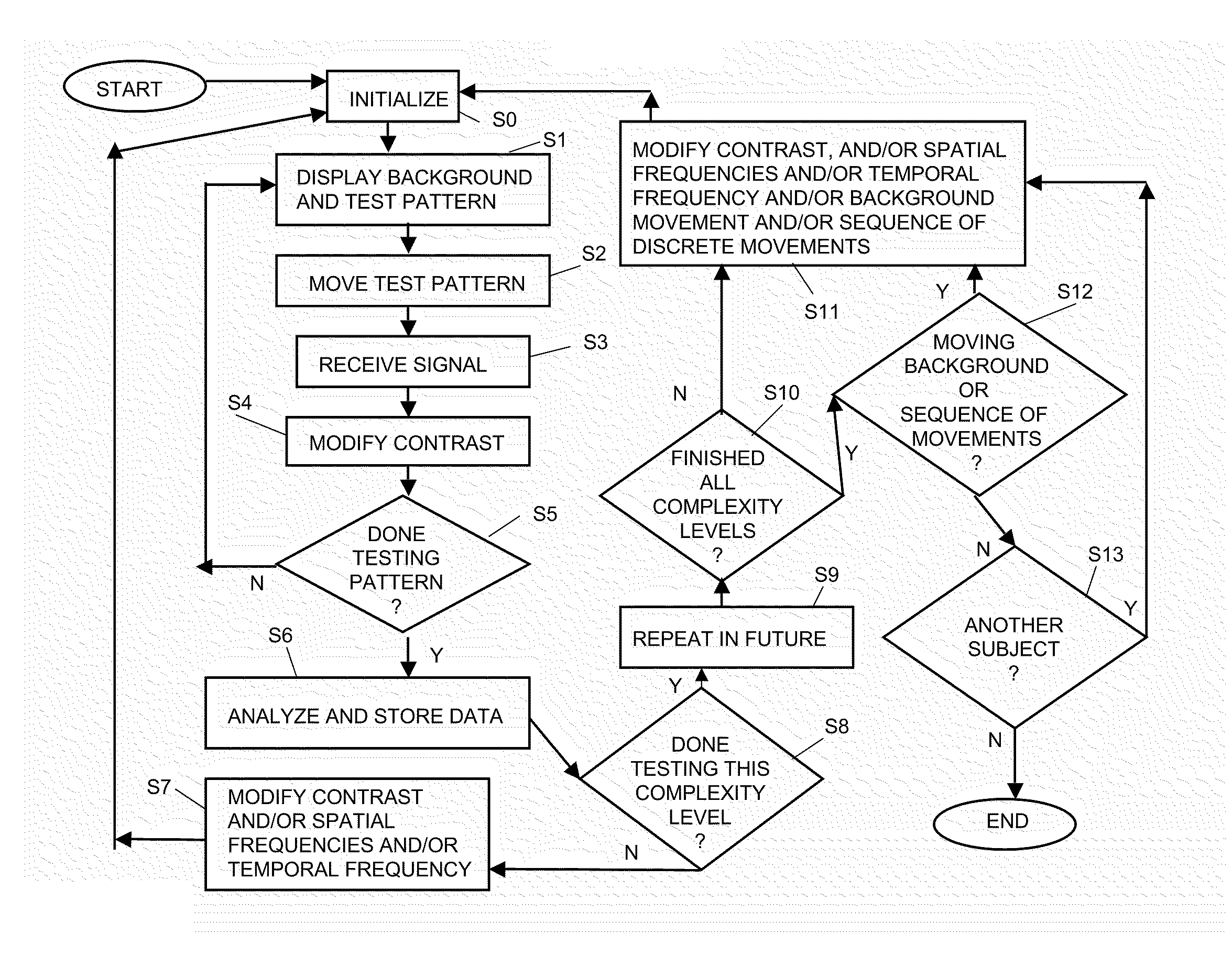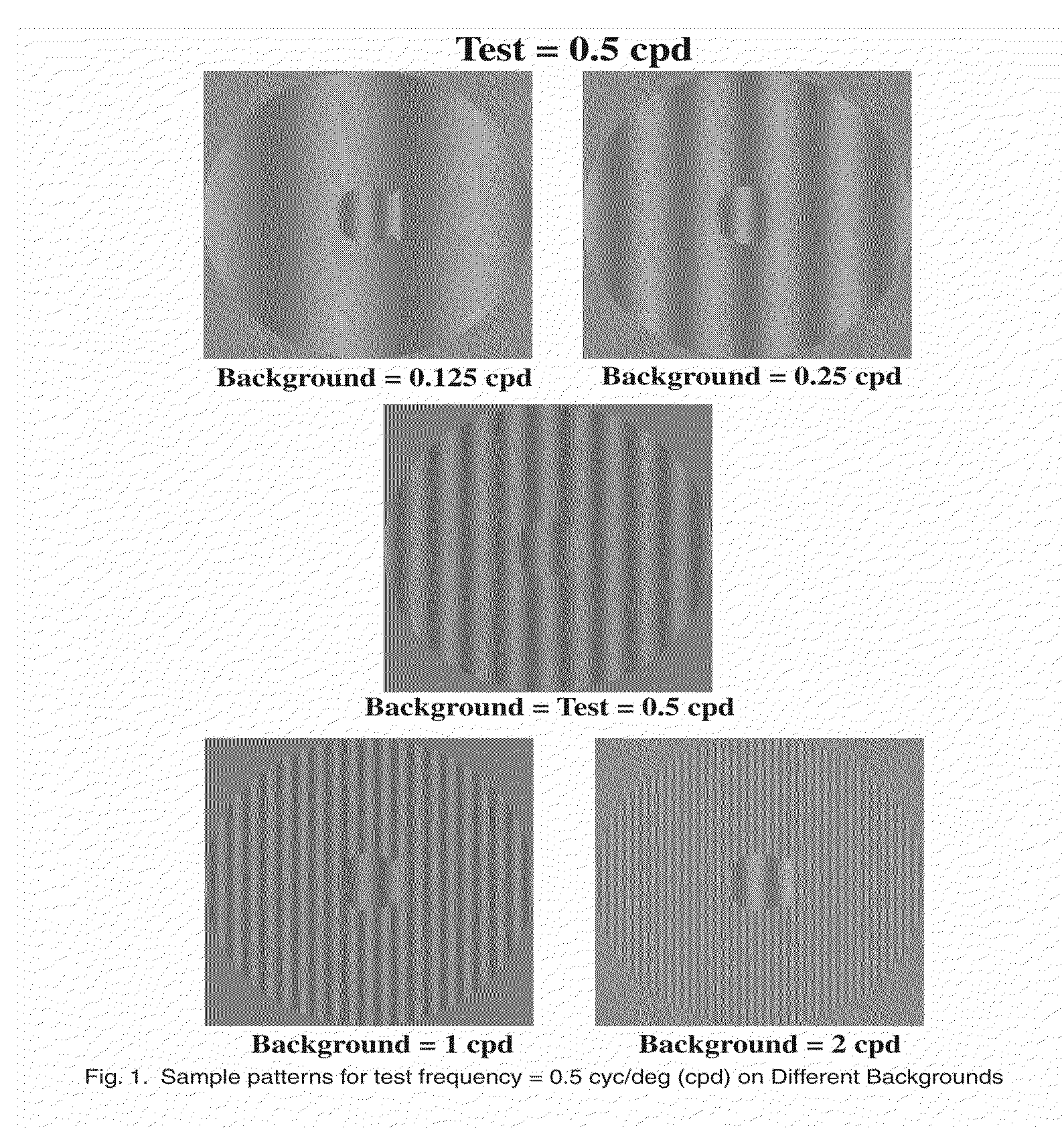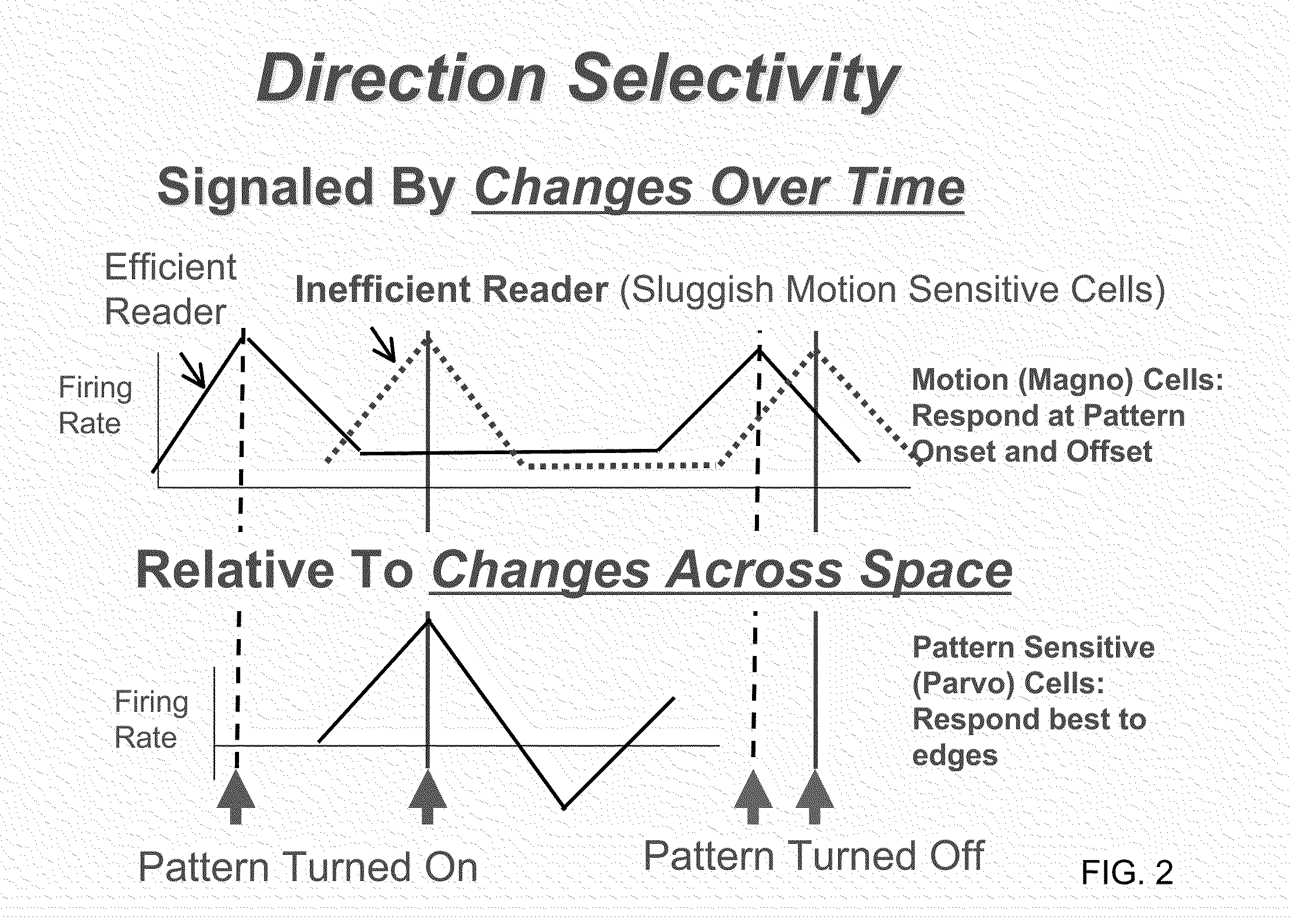Diagnosing and remediating cognitive deficits involving attention, sequential processing, reading, speed of processing, and navigation
a cognitive deficit and attention-related technology, applied in the field of attention-related cognitive deficit diagnosis and treatment, can solve the problems of slow reading speed and processing speed, unstable binocular control and depth localization, and inability to discriminate between the direction and the speed of moving patterns, so as to improve the timing of magnocellular, improve the reading rate, and the effect of little effor
- Summary
- Abstract
- Description
- Claims
- Application Information
AI Technical Summary
Benefits of technology
Problems solved by technology
Method used
Image
Examples
example 1
Studies with Children
[0093]Dyslexia can be defined as inefficient word recognition and orthographic skills when spelling phonetically irregular words, and / or as poor phonological skills (how parts of a word sound) when decoding and encoding unfamiliar words. Boder introduced the concept of three categories of dyslexia: 1) dyseidetic (trouble with sight-word recognition and spelling phonetically irregular words such as ‘laugh’ or ‘should’), 2) dysphonetic (trouble sounding out words by word attack), and 3) mixed type (both dysphonetic and dyseidetic). The dyslexia screener, described below, is based on Boder's differentiation of dyslexic children into these three subtypes.
[0094]The evidence presented below supports the view that networks in magnocellular streams play a major role in reading and cognitive tasks and are maturing in 5 to 8 year old children. The observation that rapid reading remediation was found using a direction discrimination task, and the most rapid remediation occu
example 2
Studies with Older Adults
[0117]Direction discrimination training can be used not only to improve reading skills in children, but can also improve cognitive skills in older adults. As people age, some brain functions are diminished, especially the speed of information processing. These processing speed deficits are thought to underlie the cognitive decline that older adults experience. Moreover, the prevalence of speed of processing deficits increases with age. Direction discrimination training, combined with object recognition significantly improved processing speed and performance in driving and other mobility and navigation tasks.
[0118]This study determined whether training on direction discrimination would improve the ability of older adults to discriminate the direction of motion and speed of processing, thereby improving visual and higher cognitive functions, i.e.—driving and navigation. The older adults in this study reported that in the past they had experienced a decreased func
PUM
 Login to view more
Login to view more Abstract
Description
Claims
Application Information
 Login to view more
Login to view more - R&D Engineer
- R&D Manager
- IP Professional
- Industry Leading Data Capabilities
- Powerful AI technology
- Patent DNA Extraction
Browse by: Latest US Patents, China's latest patents, Technical Efficacy Thesaurus, Application Domain, Technology Topic.
© 2024 PatSnap. All rights reserved.Legal|Privacy policy|Modern Slavery Act Transparency Statement|Sitemap



